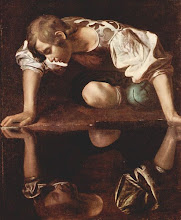

The 19th century brought an 1836 picture by Corot now in New York's Metropolitan Museum, while Delacroix chose Diana and Actaeon to illustrate Summer in this picture below from a series of paintings on the four seasons, dated 1856-1863. The original is now in Brazil's Museu de Arte de São Paulo (MASP). (public domain picture via wikipedia)

However, the story does still inspire contemporary artists such as Calum Colvin and Harvey Dinnerstein. Those in the right part of the world might be interested in a forthcoming exhibition on the theme of
Diana und Actaeon: Der verbotene Blick auf die Nacktheit at Düsseldorf's Museum Kunst Palast.
At the beginning of the 20th century, Edith Wharton published a collection of poems in 1909, the title poem of which was Artemis to Actaeon. The history of the Diane and Actéon Pas de Deux is complex and with all due trepidation (caveat quaerens) I refer to you to Wikipedia for information. The National Library of Australia has a photo of Rudolf Nureyev as Actaeon, while ballet.co has a series of stills from a performance at London's Coliseum theatre by Carlos Acosta and Tamara Rojo. There are innumerable versions on Youtube, all looking much the same apart from the costumes to this non-balletomane.





No comments:
Post a Comment